Coastal garden ideas – 10 ways to design gardens by the ocean
A coastal garden design has to cope with exposure to the elements but has a weathered charm and relaxed appeal that you can recreate wherever you live


Coastal garden design embraces natural textures, weathered finishes, a loose and relaxed style of planting and spots to pause and enjoy the ocean vistas stretching out before you.
Although an ocean view can come with challenging conditions, it also presents an opportunity to grow plants that thrive in the salty, windy, exposed situation, and create a design quite unlike any other.
The beach is a place of escapism and feeling a reconnection with nature, so include some of these key elements in your backyard ideas to create an outdoor space that perfectly complements its surroundings.
Coastal garden ideas
The most important aspect of a coastal garden design is to embrace the ocean and the conditions it creates as a source of inspiration. Make the most of the natural, rugged beauty of the landscape and work with it.
‘If you have a view of the sea from the house, the star of the show will be the water. The task for the garden is to then keep fairly quiet, to reduce the visual noise in the foreground and allow the eye to be drawn to the water and absorb the view,’ advises garden designer Helen Elks-Smith.
1. Plant with a palette inspired by the surroundings
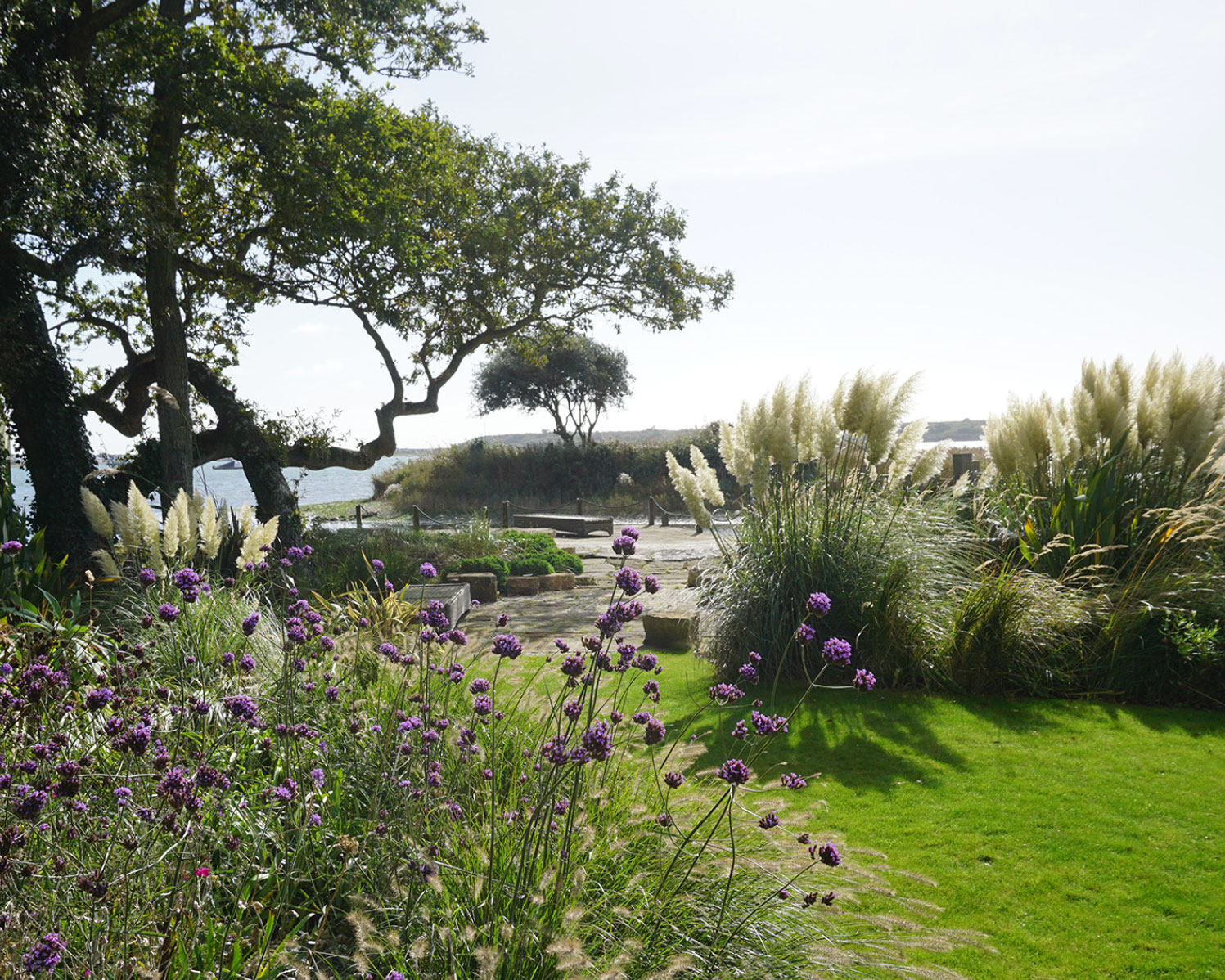
When it comes to the planting color palette for flower bed ideas in a coastal garden, take inspiration from the ocean side surroundings. ‘I like to look at the skies, the sand and the materials and take color influence from there,’ explains garden designer Jo Thompson.
Include broad swathes of coastal plants that are tolerant of the salty, windy and dry conditions that prevail, adding color, texture and movement to your garden landscape. Use of colors that reflect the ocean theme will help the garden to better fit with its surroundings.
Design expertise in your inbox – from inspiring decorating ideas and beautiful celebrity homes to practical gardening advice and shopping round-ups.
‘Silvers, olive greens, purples, whites, blues, and yellows tend to be the colors that you find in native coastal plants, but splashes of vibrant, hot colors can be introduced, too, with the likes of kniphofias,’ adds garden designer Sue Townsend.
2. Use local materials
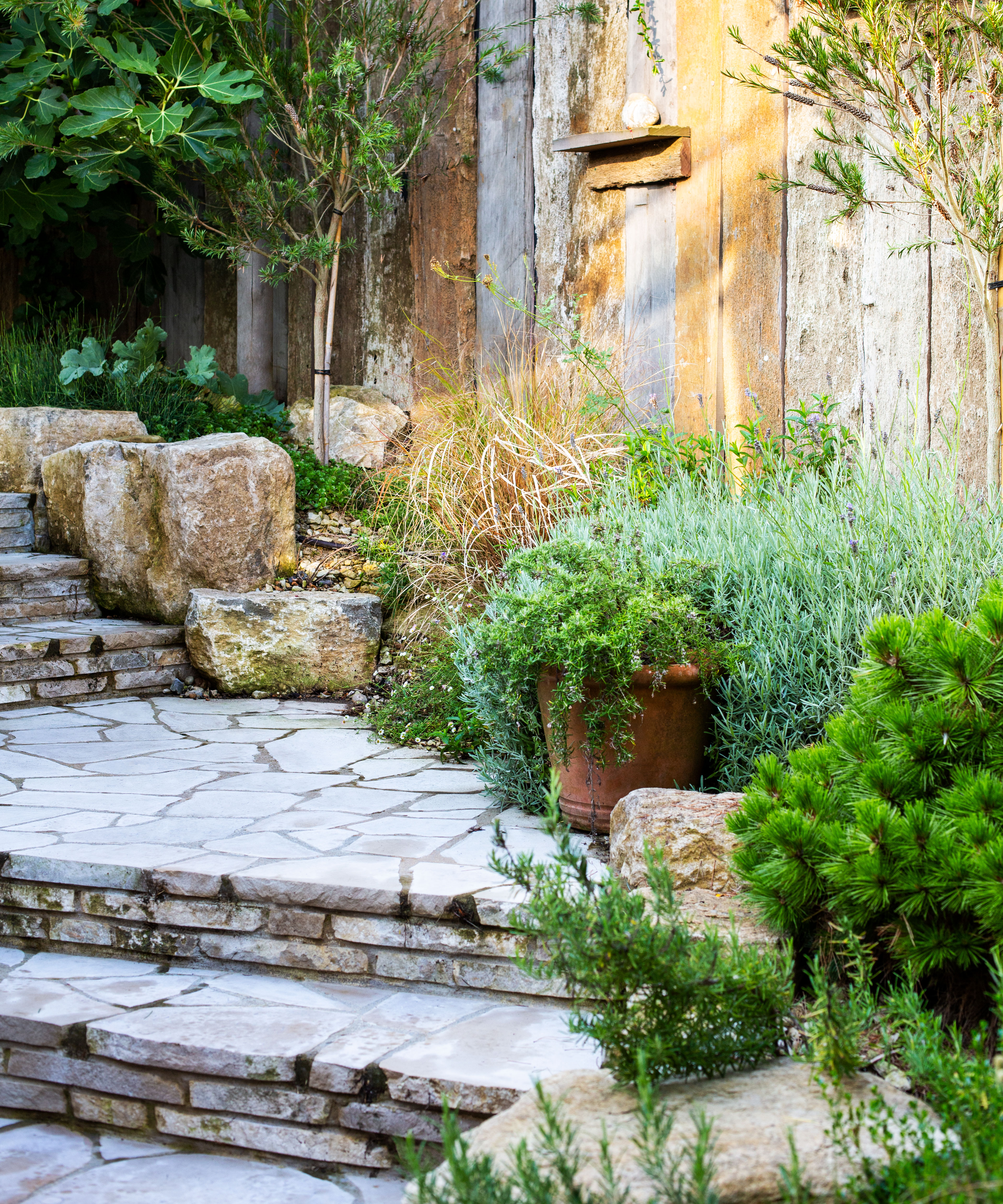
When planning the hard landscaping in a coastal garden, ‘where possible use regional stone to increase the connection to the landscape – local materials will come from the same color palette of the soil and sit quietly in it. If budget doesn’t allow, then choose an alternative material but from the same color palette,’ suggests Helen Elks-Smith.
Add boulders and other landscaping ideas with rocks to define areas or act as impromptu seating and use local stone for garden path ideas.
Like any other garden, the hard landscaping should complement the architecture of the property and link in with the surrounding landscape. 'If you are by a rugged, rocky coastline then echo the stone that you see around you; or if you are near shingle beach, source pebbles or gravel from a local quarry,’ adds Sue Townsend.
3. Protect from the elements
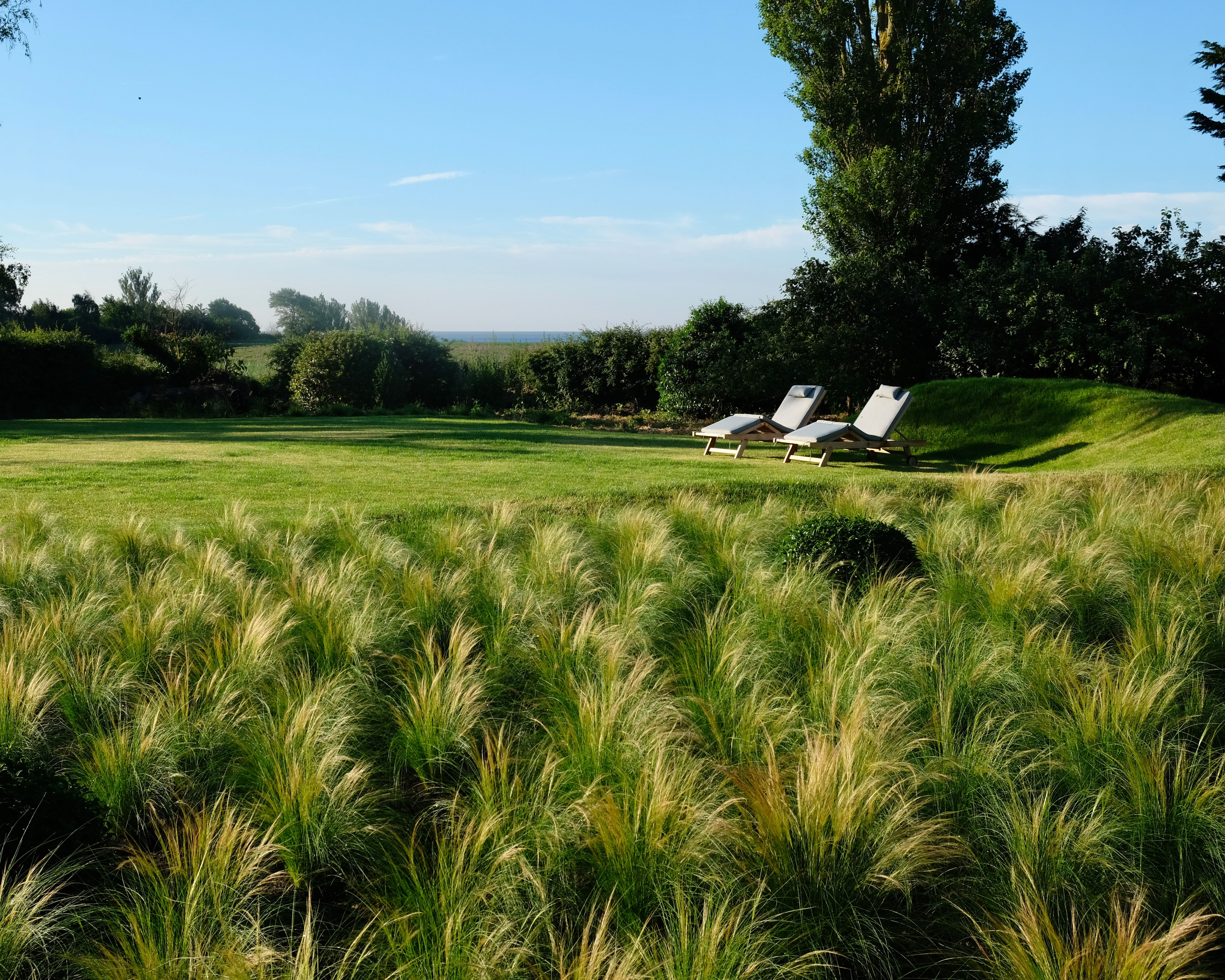
A coastal garden can be subject to strong, salt laden winds so if you have the space and are able to plant a windbreak of fast growing shrubs and trees that can withstand these elements it will help provide some shelter.
‘If space is limited, a hardy hedge can help filter and slow down the effects of the wind, or another option is to create mounds or sunken areas in the garden,’ advises Sue Townsend.
The degree of protection needed will depend on whether the garden is directly on the coast or slightly further back. ‘Protecting the whole garden is likely to compromise the views, which is best avoided. Blocking wind on a coastal garden is likely to cause air turbulence, which can create new problems. Slowing the wind and focusing protection for key areas is likely to be more successful and provide more predictable results. Taller plants are very effective at slowing wind,' says Helen Elks-Smith.
4. Use fencing for screening

If you're looking for garden fence ideas, a slatted windbreak fence can provide some protection from the wind, suggests Sue Townsend.
‘Hit-and-miss' type fencing – where the boards are alternately fixed on the front and back of the rails – whether vertical or horizontal forms, will probably withstand the wind better than a solid fence and cause less turbulence. Bespoke fencing that plays with ideas from the coastal landscape are worth exploring, too,’ advises Helen Elks-smith.
5. Build raised beds
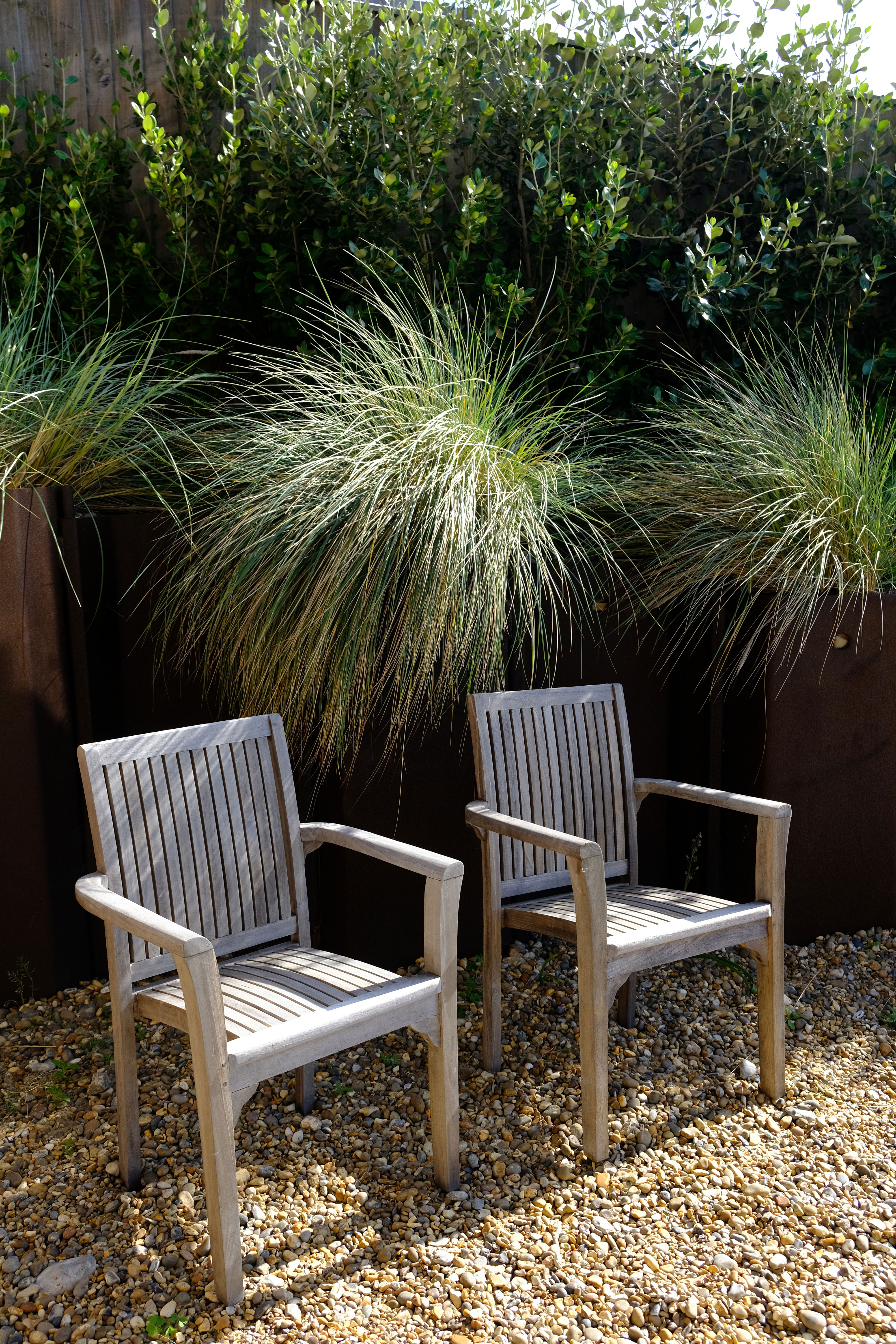
Raised garden beds are typical of a coastal style and one solution to cope with the poor soil of many coastal gardens and are also a solution when designing a sloping garden, which many coastal plots are.
When it comes to materials to use, ‘look to reclaimed timbers from local reclamation yards, or local stone from quarries. Work with materials that you know work in the area, and take an inventory of what appears locally,’ advises garden designer Jo Thompson.
Consider also recycled agricultural feeding troughs or old, reclaimed boat hulls to enhance the nautical theme.
6. Plant into gravel
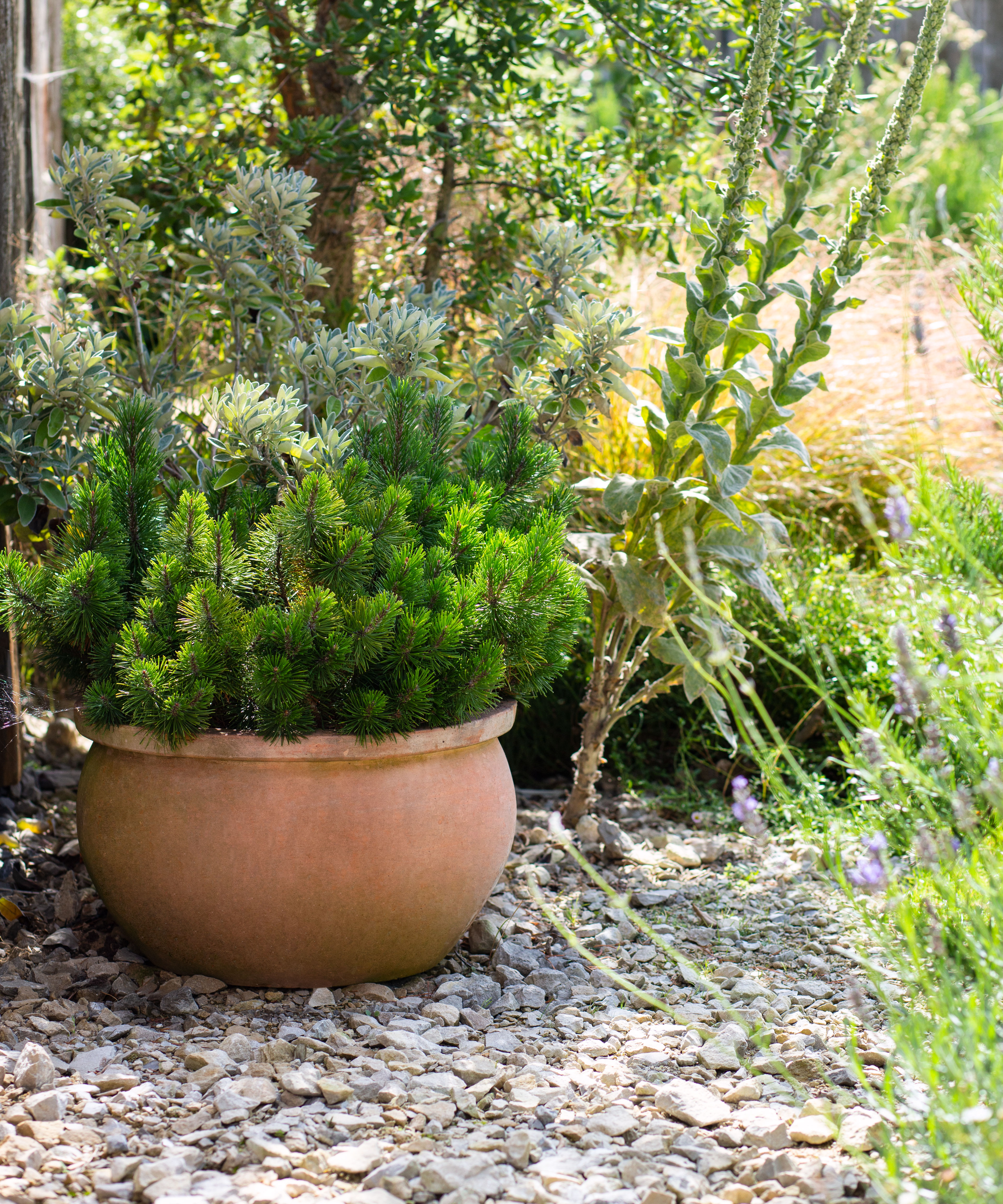
To recreate the natural feel of plants growing haphazardly from the sand and shingle as you would find on the coast, create a gravel garden by planting into locally sourced gravel or shingle with a selection of drought tolerant planting. Choose both ornamental grasses to give height, and ground cover choices to scramble over the stones. The gravel will also act as a mulch to conserve moisture in the soil.
'I import compost and mulch to improve the soil below the gravel or shingle then move the gravel back – always working with what is there,' says Jo Thompson.
‘Plant into a weed free soil and then lay a 40mm depth of gravel or shingle. If you keep to this depth, the weeds will find it hard to germinate – any that do appear over time tend to have been airborne and are easy to pull out. Planting in this way gives you more ease and flexibility to lift and move plants over time, and to add bulbs, rather than wrestling with cutting holes and planting into geotexitle membranes underneath the gravel,’ advises garden designer Sue Townsend.
7. Design with decking
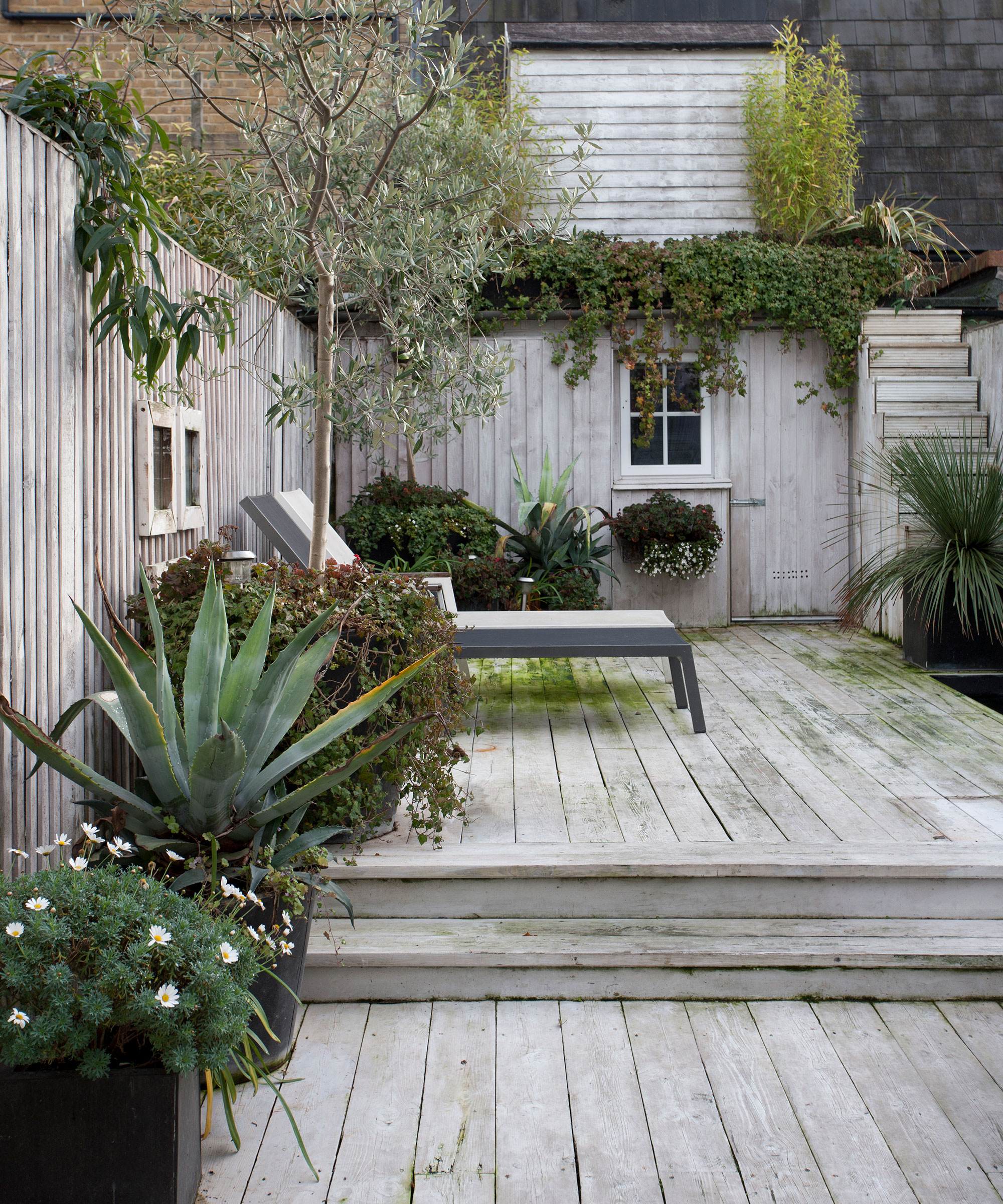
‘Wooden decking works well in a sunny spot in the garden and has a wonderful coastal vibe when it is left to weather so it silvers up,’ explains Sue Thompson.
Deck ideas are perfect for a sloping garden and can be set at different levels to enjoy different views.
'On a practical basis, make sure any metal fixtures and fittings will not corrode with the salt laden winds – marine grade stainless steel light fittings, balustrades and screws would work best,’ Sue adds.
'Use hardwood, make sure it isn’t slippery, and also that it will last,' says Jo Thompson.
8. Comb the beaches
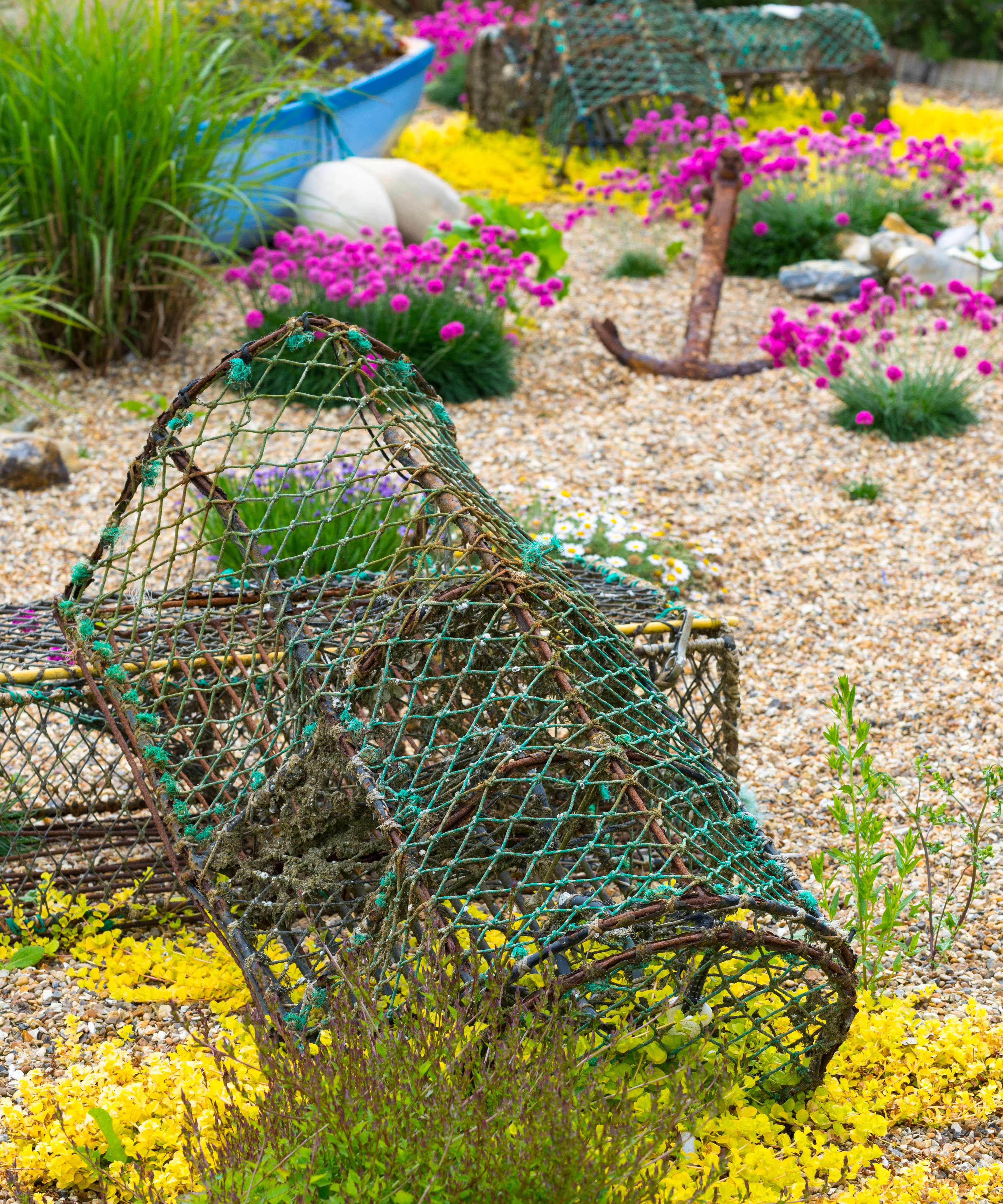
A coastal garden is peppered with beachcomber finds, along with foraged shells, stones, lengths of driftwood and salvaged artefacts.
To these add old wooden crates and weathered pots as container gardening ideas, filled with plants suited to the conditions, such as succulents including aeonium and sempervivum that work perfectly in a seaside context and perform well in salty winds.
9. Plan a seating area to enjoy the views
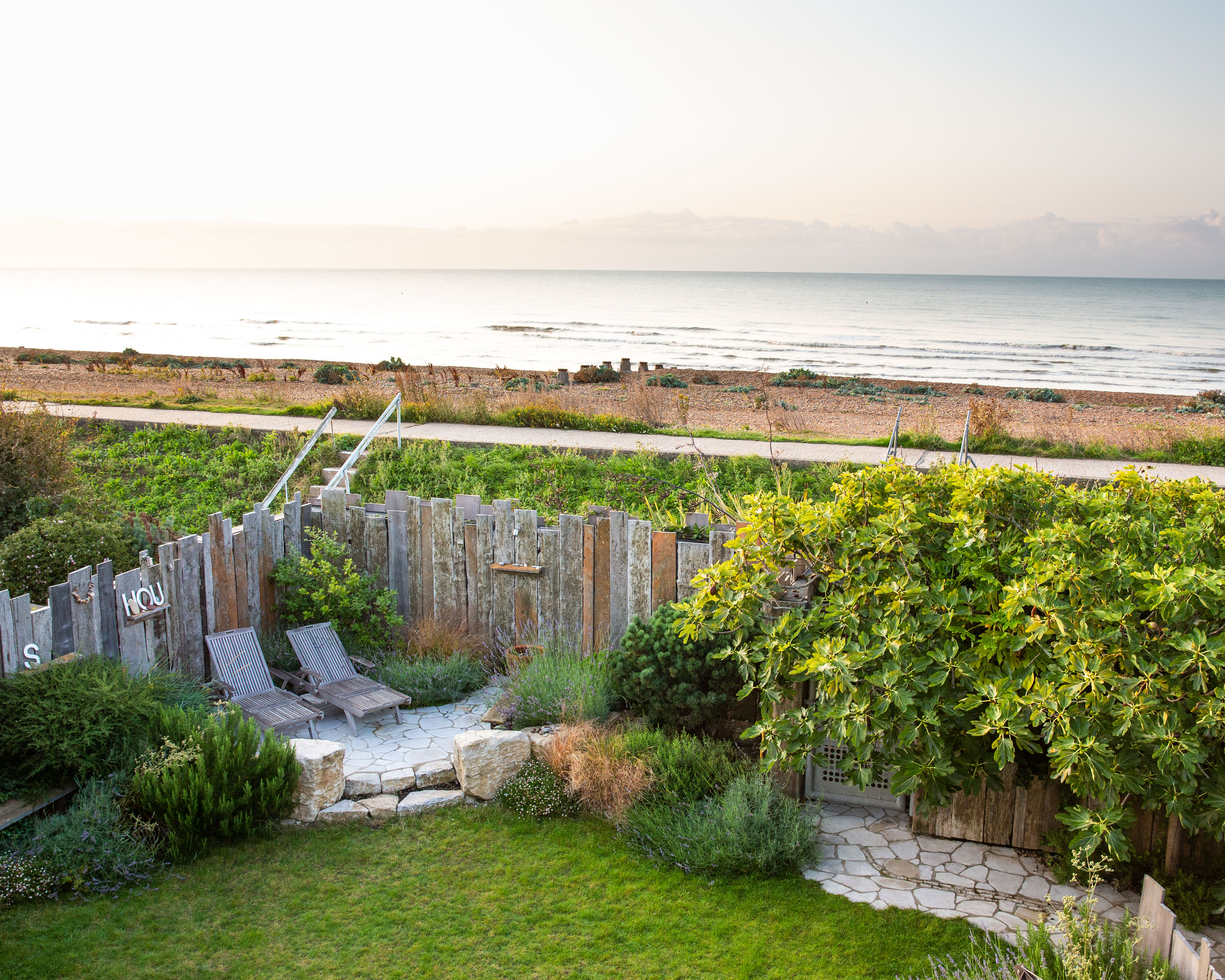
Creating somewhere to sit in the garden to enjoy the ocean view is paramount in coastal garden design.
'Once you have found the perfect spot with great views out to the landscape and protected from the winds, the next consideration is how to ensure that this same space blends out to the landscape,' explains Helen Elks-Smith.
Planting to lift the eye to the landscape and soften the view of the seating space and the furniture from the house is key.
10. Include naturalistic curves
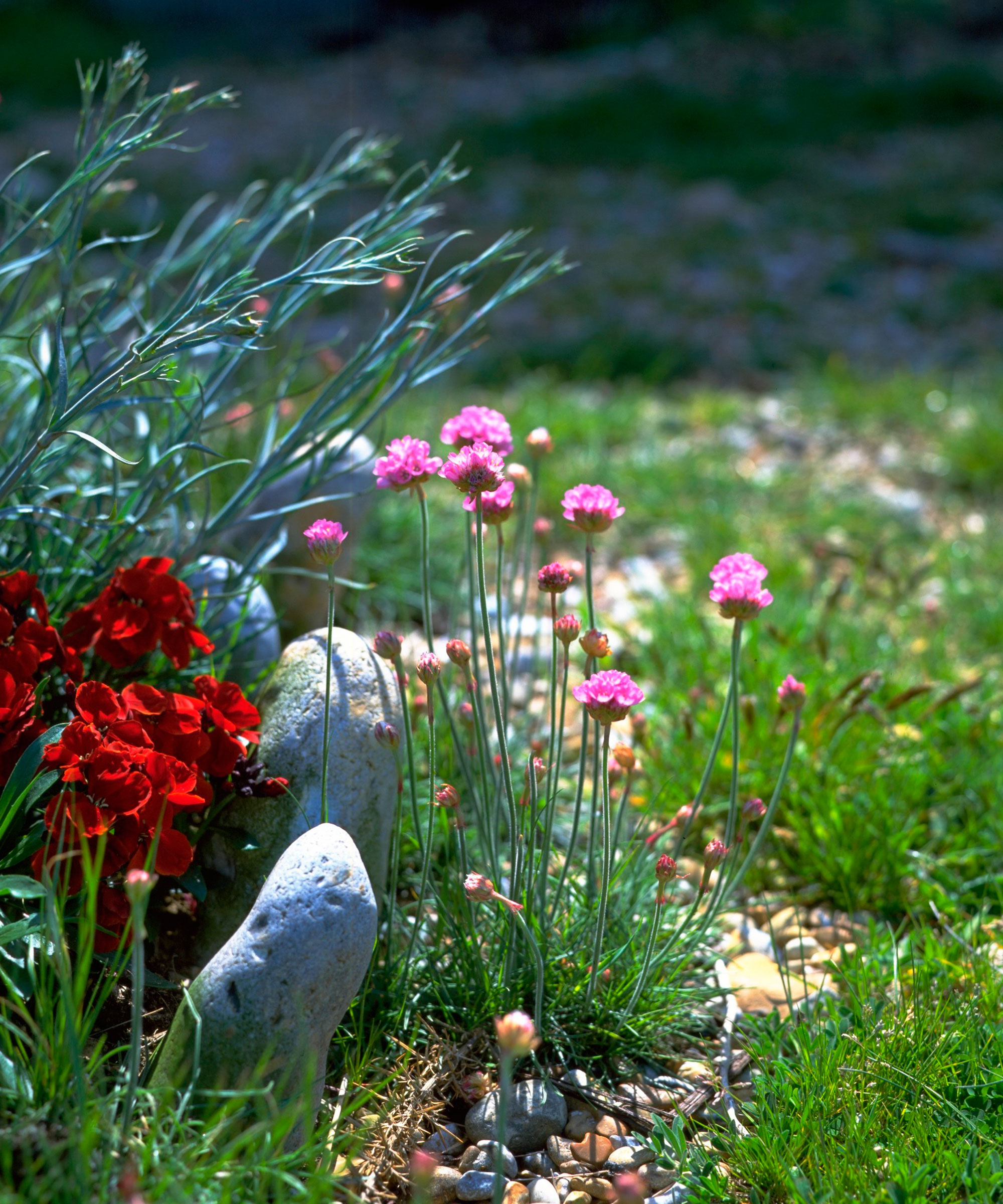
Reflect the natural lines of the surrounding landscape in your coastal garden design so that the garden flows into its surroundings. Just as coastal paths snake along the coastline, design garden paths and borders so that they have a carefree, loose feel, gently undulating.
What are coastal gardens?
Coastal gardens are those that are positioned beside, or near, the ocean on the coastline, so will be exposed to the winds, salty air and often dry, sloping ground conditions that are associated with the location.
The choice in planting therefore needs to take account of these conditions to ensure that plants chosen for the location can cope with the conditions. The design of the coastal garden can also help protect plants and provide better growing conditions.
'For many coastal gardens, neighbouring properties and trees will slow the prevailing winds and reduce the salt spray and give wider plant choices,' explains Helen Elks-Smith.
How do you make a seaside garden?
You can make a seaside garden by incorporating any of the design elements mentioned above. In fact, you do not need to live by the sea to create a coastal garden design, and even inland and urban gardeners can still recreate the feel of an ocean spot by planting with coastal plants that are well suited to many conditions, and including features, materials and textures associated with the coast.
Rachel is senior content editor, and writes gardening content for homesandgardens.com, Homes & Gardens magazine, and its sister titles Period Living Magazine and Country Homes & Interiors. She has written for lifestyle magazines for many years, with a particular focus on gardening, historic houses and arts and crafts, but started out her journalism career in BBC radio, where she enjoyed reporting on and writing programme scripts for all manner of stories. Rachel then moved into regional lifestyle magazines, where the topics she wrote about, and people she interviewed, were as varied and eclectic as they were on radio. Always harboring a passion for homes and gardens, she jumped at the opportunity to work on The English Home and The English Garden magazines for a number of years, before joining the Period Living team.
